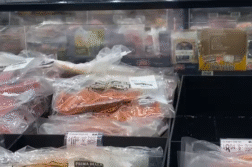ORLANDO, FL (Ivanhoe Newswire) — After a brief decrease in suicides in 2020, rates have seen their sharpest increase in 20 years. Every 11 minutes someone dies by suicide and every 31 seconds there is an attempt. Suicide doesn’t discriminate by age, race, or gender and it is now the second leading cause of death for those under 35.
“My sibling attempted suicide when I was seven, then my dad, then my daughter,” shared Erica Kitzman.
After a brief decline in suicide rates from 2018 to 2020, experts say isolation from pandemic-related lockdowns and economic turmoil is causing the sharpest increase in suicide rates in 20 years. Suicide now moved up from being the twelfth leading cause of death to the eleventh. It’s also the second leading cause of death for people ages 10 to 34. But what should you do if you see a loved one suffering?
“The best thing you can say to someone who is suicidal or having suicidal thoughts is that you’re not going to leave him alone,” said Juliet Kirwan Carr, Author & Activist.
Remove dangerous objects such as firearms, ammunition, toxic substances, and sharp items that can cause harm. This reduces the risk of your loved one harming themselves. Be sure to get a professional involved immediately if the situation is dire by dialing the suicide prevention lifeline at 988 or taking your loved one to the emergency room directly.
If someone close to you has attempted or died by suicide, make sure to have your own support network. Forty-eight percent of people who have been exposed to someone’s suicide were twice as likely to develop depression or anxiety and were more likely to commit suicide themselves.
Sources:
https://www.cdc.gov/suicide/suicide-data-statistics.html, https://wmich.edu/suicideprevention/basics/facts
https://www.cdc.gov/suicide/suicide-data-statistics.html
https://www.nytimes.com/2022/06/13/well/mind/suicidal-thoughts-help.html, https://www.psychologytoday.com/us/blog/the-savvy-psychologist/201909/how-help-loved-one-struggling-suicidal-thoughts
Contributors to this news report include: Milvionne Chery, Producer; Roque Correa, Videographer and Editor.
To receive a free weekly email on Smart Living from Ivanhoe, sign up at: http://www.ivanhoe.com/ftk



